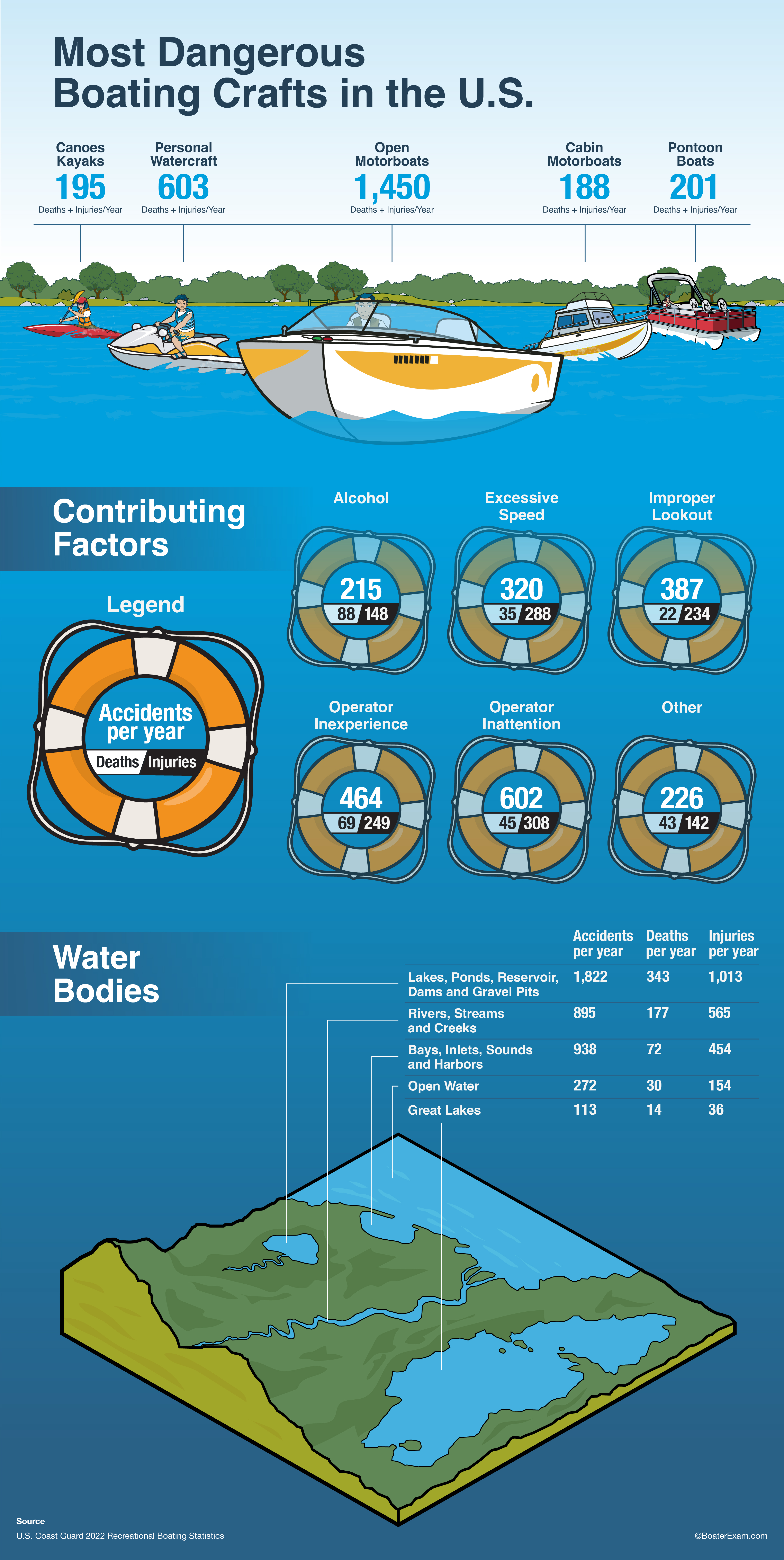Boating Accidents: The Most Dangerous Boating Crafts in the U.S.

Are you operating one of the most dangerous boating crafts in the United States? You could be.
However, all boats or watercraft can be inherently dangerous if not operated safely. The key to avoiding boating accidents and injuries is to understand your watercraft – whether it's a powerboat, sailboat, canoe, fishing boat, personal watercraft (PWC), or kayak – and what it takes to operate it safely.
So, how dangerous is your boating craft? We pulled some statistics together in an infographic to help you see the dangers on the water.
Visualizing Boating Accident Statistics
We're not trying to scare you with these numbers; instead, we want to help you stay informed and prepared on the water so you can enjoy more safe outings on your boat or canoe!
Every year, the U.S. Coast Guard compiles statistics on reported recreational boating accidents. These statistics are derived from accident reports filed by the owners and operators of recreational vessels involved in accidents.
The amount of data collected is massive and sometimes overwhelming. To help visualize some of these statistics, we have compiled the following graphic showing some of the 2022 data.
The information includes:
- Boating crafts with the top casualty numbers
- Top known primary contributing factors of accidents
- Accidents by type of body of water
The information can be eye-opening and scary, but remember that most accidents on the water can be avoided with proper safety education and practices when operating your watercraft.

How to Stay Safe When Operating Watercraft
While the numbers we've shared in the graphic above are based on U.S. statistics, the same pattern applies to boating in Canada.
Motorboats tend to be the most dangerous watercraft, contributing to the highest number of injuries or deaths each year. Alcohol, operator inattention, and lack of experience are some of the leading factors in boating accidents. While these numbers have dropped over the years, any accidents, injuries, or deaths are too many.
Don't Avoid the Water
So, should you stay out of the water completely to stay safe? Of course not!
Plenty of fun can be had on the water every season, and the best way to enjoy your boat or PWC is to head out with the support of boating safety education to guide your actions and keep you prepared to prevent accidents.
A boater safety course helps you understand potential dangers and how to avoid them.
Be Aware That Accidents Can Happen in Any Body of Water
Were you surprised to see that so many accidents happen on rivers, streams, and even ponds? While tragic, it's a good reminder to practice sound safety essentials no matter where you enjoy the water.
Even a small pond or a gravel pit filled with water can be a hazardous area for kayaking or water activities when safety is not a priority.

BOATERexam Helps You Avoid Boating Accidents
We hope that visualizing boating accident statistics helps you understand the importance of applying good safety practices on the water, whether you operate a motorboat or you enjoy a calm afternoon of kayaking down the river. There's never an instance on the water when safety should be ignored or overlooked!
BOATERexam wants to help every boater avoid becoming a statistic. Our online courses are state-approved for boaters in the U.S. and Canada-approved for Canadian boaters. They meet the requirements for boating safety education before you can get a boating license and hit the water.
We want you to enjoy more adventures during boating season. So, before you head out again, make sure you've passed a safety course. If boating in the U.S., choose the course for your state. For Canadian boaters, select the Canada-approved course.
Originally published November 11, 2010. Content last updated June 10, 2024.



